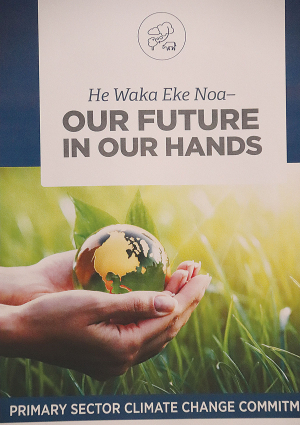He Waka Eke Noa (Our Future in Our Hands) is the agri sector’s blueprint and commitment to dealing with climate change.
Uniquely all 11 partners from the livestock, processing, horticulture and arable, Maori, apiculture and irrigation sectors, and Federated Farmers, have signed this document which is unprecedented. Squabbling is often the norm.
The 14-page document outlines their collective commitment to working with the Government in ‘good faith’ on the challenging issue of climate. It acknowledges the need for change and that they want to share in the Government’s aspirations to shift to producing higher value products.
It says urgent action is needed but points out the obvious -- that few farmers know what practical actions they can take to meet some of the broad objectives set by Government.
“If NZ is to make a difference in climate change we need to stand shoulder-to-shoulder under a common set of values and principles,” the document says.
The document is both aspirational and pragmatic, because by uniting to face the Government they make it harder for the latter to ignore them. Divide and conquer is no longer an option.
Some important milestones are proposed over five years, as signalled in the report. For example:
2021 - the proportion of farmers who understand the actions they can take in respect of greenhouse gases (GHGs) will have increased from 50% to 90%
2022 - farmers will know their farm emission numbers
2025 - a system of farm-level accounting and reporting of agricultural emissions will be in place.
All farms will have a farm environment plan in place, and 70% of them will agree they are managing their GHGs in accordance with their farm plan.
The report also acknowledges the present work done by many groups including DairyNZ with its Dairy Environment leaders programme, Miraka’s Te Ara Miraka scheme which rewards farmer excellence, and Fonterra’s recognition and reward scheme.
It notes the value of competitions such as the dairy industry awards, the Ballance Farm Environment Awards and the Ahuwhenua Awards, all promoting industry role models.
It also notes that DairyNZ has reprioritised its research funding into sustainability initiatives and has been spending on GHG mitigation initiatives. It mentions similar initiatives by other members of the group.
Overall the document stated the parties’ intentions and the representatives at Parliament talked up the positive points.


















